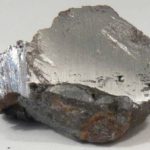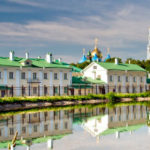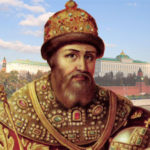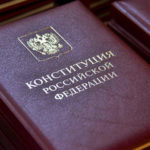Interesting facts about the Russian ruble
 Being one of the major world currencies, the Russian ruble is money with a long history. Of course, with historical gold rubles there is little that binds him, except for the name, but this is quite enough to claim that it is older than many other currencies. Times go by, coins and banknotes replace each other, but the ruble still takes its place on the world economic stage.
Being one of the major world currencies, the Russian ruble is money with a long history. Of course, with historical gold rubles there is little that binds him, except for the name, but this is quite enough to claim that it is older than many other currencies. Times go by, coins and banknotes replace each other, but the ruble still takes its place on the world economic stage.
It once got its name when the first “coins” were made by cutting off pieces from silver bars.
Worldwide, the Russian ruble, used since the 13th century, is the second oldest currency. Older than its only English pound.
The Russian ruble is used as the official currency not only in the Russian Federation, but also in partially recognized states – in Abkhazia and South Ossetia.
The name “ruble” is used only in two countries – in Russia and Belarus.
In 1991-1993, the Russian ruble was in circulation along with the Soviet one.
Since 2012, coins with face values of 1 and 5 kopecks are no longer produced, since their production is more expensive than they actually cost.
The modern symbol of the Russian ruble was approved in 2013.
The ruble coins that were minted during the reign of Peter I were almost 100% silver. Therefore, they were valuable, but rather mild.
Until the 20th century, the word “chervonets” meant not ten rubles, but three.
In the early 1960s, the ruble was almost equal to a gram of gold, and was a much more expensive currency than the US dollar.
In Tomsk and Dimitrovgrad there are monuments to the Russian ruble.
The first symbol of the ruble was coined in the 17th century. It consisted of the letters “P” and “U” superimposed on each other.
The historic Russian ruble was a 200-gram piece of silver, cut off from a 2-pound ingot, called the hryvnia.
It was the Russian ruble that became the first currency in the world, in 1704, equated to a certain number of other coins. In this case, one ruble equated to 100 kopecks.
At the end of the 19th century, Russia could well have remained without a ruble if the reform proposed by S. Witte had been adopted. He believed that it was worth replacing the usual rubles with a new coin called “Rus”.
The modern Russian ruble, unlike the Soviet one, has no gold equivalent.
Russian banknotes taken out of circulation, including due to dilapidation, are used as recyclable materials for the production of roofing material.
Before the use of the ruble in Ancient Russia, mostly foreign coins were used, mainly European ones.
Catherine II, for the first time in Russia, introduced paper money. Before that, Russian rubles existed only in the form of coins.
The Central Bank of Russia every year produces gold coins with a denomination of 10 thousand rubles. Each such coin consists of a kilogram of gold, and is, of course, more expensive than its nominal value. In fact, this is just a gold bar. However, these coins also have the status of an official means of payment.



























